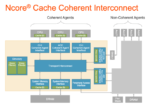You are currently viewing SemiWiki as a guest which gives you limited access to the site. To view blog comments and experience other SemiWiki features you must be a registered member. Registration is fast, simple, and absolutely free so please,
join our community today!
WP_Term Object
(
[term_id] => 6435
[name] => AI
[slug] => artificial-intelligence
[term_group] => 0
[term_taxonomy_id] => 6435
[taxonomy] => category
[description] => Artificial Intelligence
[parent] => 0
[count] => 754
[filter] => raw
[cat_ID] => 6435
[category_count] => 754
[category_description] => Artificial Intelligence
[cat_name] => AI
[category_nicename] => artificial-intelligence
[category_parent] => 0
[is_post] =>
)
To understand AI’s capabilities and abilities we need to recognize the different components and subsets of AI. Terms like Neural Networks, Machine Learning (ML), and Deep Learning, need to be define and explained.
In general, Artificial intelligence (AI) refers to the simulation of human intelligence in machines that are programmed… Read More
SiMa.ai just announced that they achieved first silicon success on their new MLSoC, for AI applications at the edge, using Synopsys’ design, verification, IP and design services solutions. Notably this design includes the Synopsys ARC® EV74 processor (among other IP) for vision processing. SiMa.ai claim their platform, now… Read More
The latest advanced driver-assistance systems (ADAS) like Mercedes’ Drive Pilot and Tesla’s FSD perform SAE Level 3 self-driving, with the driver ready to take back control if the vehicle calls for it. Reaching Level 5 – full, unconditional autonomy – means facing a new class of challenges unsolvable with existing technology… Read More
It’s all around us. The pervasive use of AI is changing our world. From planetary analysis of weather patterns to monitoring your vital statistics to assess health, it seems as though smart everything is everywhere. Much has been written about the profound impact AI is having on our lives and society. Everyone seems to agree that… Read More
Ever wonder why coherent networks are needed beyond server design? The value of cache coherence in a multi-core or many-core server is now well understood. Software developers want to write multi-threaded programs for such systems and expect well-defined behavior when accessing common memory locations. They reasonably expect… Read More
The chase to add artificial intelligence (AI) into many complex applications is surfacing a new trend. There’s a sense these applications need a lot of AI inference operations, but very few architects can say precisely what those operations will do. Self-driving may be the best example, where improved AI model research and discovery… Read More
“Who guards the guardians?” This is a question from Roman times which occurred to me as relevant to this topic. We use constrained random to get better coverage in simulation. But what ensures that our constrained random testbenches are not wanting, maybe over constrained or deficient in other ways? If we are improving with a faulty… Read More
Artificially stalling datapaths and virtual channels is a creative method to uncover corner case timing bugs. A paper from Nvidia describes a refinement to this technique. Paul Cunningham (GM, Verification at Cadence), Raúl Camposano (Silicon Catalyst, entrepreneur, former Synopsys CTO and now Silvaco CTO) and I continue… Read More
Qualcomm’s AI playby Anand Joshi on 06-21-2022 at 10:00 amCategories: AI
Qualcomm is a common name in mobile industry for chips. The company has generated $33 billion in revenue in 2021 and continues to march ahead with its innovations. However, Qualcomm doesn’t get the same visibility and mention as Nvidia and Intel in the world of AI chips. By our estimate, Qualcomm’s contribution to … Read More
I’ve written several articles on High-Level Synthesis (HLS), designing in C, C++ or SystemC, then synthesizing to RTL. There is unquestionable appeal to the concept. A higher level of abstraction enables a function to be described in less lines of code (LOC). Which immediately offers higher productivity and implies less bugs… Read More











Quantum Computing Technologies and Challenges